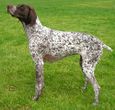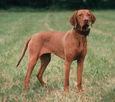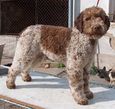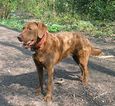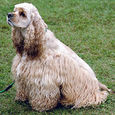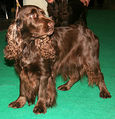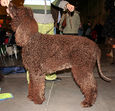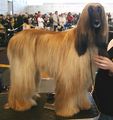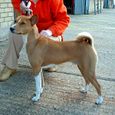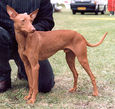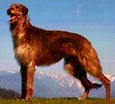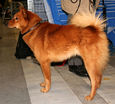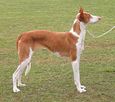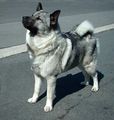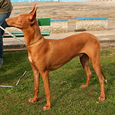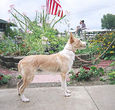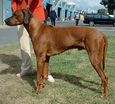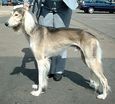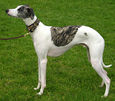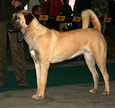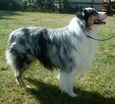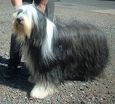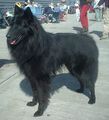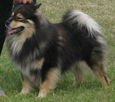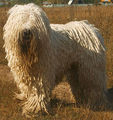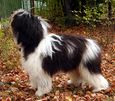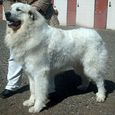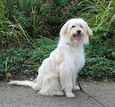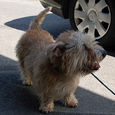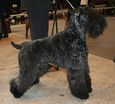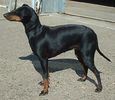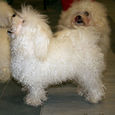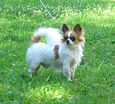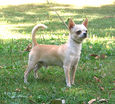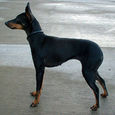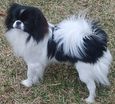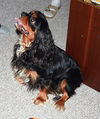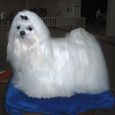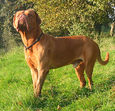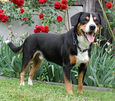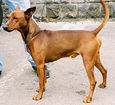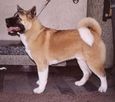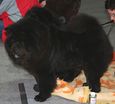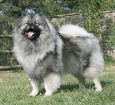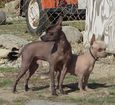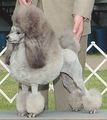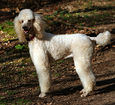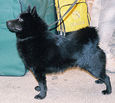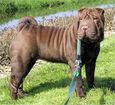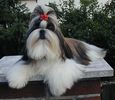|
|
| Line 38: |
Line 38: |
| | Image:Tollers.jpg|'''Retriever (Nova Scotia Duck Tolling)'''<p><small>( © Malgorzata Korbel WikiMedia Commons)</small> | | Image:Tollers.jpg|'''Retriever (Nova Scotia Duck Tolling)'''<p><small>( © Malgorzata Korbel WikiMedia Commons)</small> |
| | Image:Slovakian_rough_haired_pointer.jpg|'''Slovakian Rough Haired Pointer'''<p><small>( © Pleple2000 WikiMedia Commons)</small> | | Image:Slovakian_rough_haired_pointer.jpg|'''Slovakian Rough Haired Pointer'''<p><small>( © Pleple2000 WikiMedia Commons)</small> |
| − | Image:Small_munsterlander.jpg|'''Small Munsterlander'''<p>WikiCommons | + | Image:Small_munsterlander.jpg|'''Small Munsterlander'''<p><small>( © F. Wiertz WikiMedia Commons)</small> |
| | Image:American_cocker_spaniel.jpg|'''Spaniel (American Cocker)'''<p>dogsindepth.com | | Image:American_cocker_spaniel.jpg|'''Spaniel (American Cocker)'''<p>dogsindepth.com |
| | Image:American_water_spaniel.JPG|'''Spaniel (American Water)'''<p>WikiCommons | | Image:American_water_spaniel.JPG|'''Spaniel (American Water)'''<p>WikiCommons |
Revision as of 22:13, 15 April 2010
Overview
The following breeds have been classified according to The Kennel Club guidelines. Any breed not part of these guidelines has been omitted, excluding the Dangerous Dogs section. The descriptions for each group are also from The Kennel Club. For further information regarding a specific breed please see http://www.thekennelclub.org.uk/.
Gundog Group
- Dogs that were originally trained to find live game and/or to retrieve game that had been shot and wounded. This group is divided into four categories - Retriever, Spaniels, Hunt/Point/Retrieve and Setters.^
Bracco Italiano( © Gábor Essösy WikiMedia Commons)
Brittany( © JL Goasdoue WikiMedia Commons)
English Setter( © Ellen Levy Finch WikiMedia Commons)
German Long-Haired Pointer( © Pleple2000 WikiMedia Commons)
German Short-Haired Pointer( © Ellen Levy Finch WikiMedia Commons)
German Wire-Haired Pointer( © Ellen Levy Finch WikiMedia Commons)
Gordon Setter( © Jukka Puro WikiMedia Commons)
Hungarian Vizsla( © Tino Hentschel WikiMedia Commons)
Hungarian Wirehaired Vizsla( © Pleple2000 WikiMedia Commons)
Irish Red and White Setter( © Pleple2000 WikiMedia Commons)
Irish Setter( © Luis Miguel Bugallo Sánchez WikiMedia Commons)
Italian Spinone( © Alephalpha WikiMedia Commons)
Kooikerhondje( © Caronna WikiMedia Commons)
Korthals Griffon( © Ellen Levy Finch WikiMedia Commons)
Lagotto Romagnolo( © Caronna WikiMedia Commons)
Large Munsterlander( © Caronna WikiMedia Commons)
Pointer( © Fir0002 WikiMedia Commons)
Retriever (Chesapeake Bay)( © Nevilley WikiMedia Commons)
Retriever (Curly Coated)( © Zwoenitzer WikiMedia Commons)
Retriever (Flat Coated)( © Gunnandreassen WikiMedia Commons)
Retriever (Golden)( © Monika Mężyńska WikiMedia Commons)
Retriever (Labrador)( © Ellen Levy Finch WikiMedia Commons)
Retriever (Nova Scotia Duck Tolling)( © Malgorzata Korbel WikiMedia Commons)
Slovakian Rough Haired Pointer( © Pleple2000 WikiMedia Commons)
Small Munsterlander( © F. Wiertz WikiMedia Commons)
Spaniel (American Cocker)dogsindepth.com
Spaniel (American Water)WikiCommons
Spaniel (Clumber)WikiCommons
Spaniel (English Cocker)WikiCommons
Spaniel (Field)WikiCommons
Spaniel (Irish Water)WikiCommons
Spaniel (Sussex)WikiCommons
Spaniel (Welsh Springer)WikiCommons
Spanish Water Dogdogbreedinfo.com
Hound Group
- Traditionally used for hunting by scent or sight. They require a significant amount of exercise and can be described as dignified, aloof but trustworthy companions.^
Basset Bleu De GascogneWikiCommons
Basset Fauve De BretagneWikiCommons
Basset Griffon Vendeen (Grand)WikiCommons
Basset Griffon Vendeen (Petit)WikiCommons
Bavarian Mountain HoundWikiCommons
Cirneco Dell'EtnaWikiCommons
Dachshund (Miniature)WikiCommons
Dachshund (Standard Short-haired)WikiCommons
Grand Bleu De Gascognevdh.de
HamiltonstovareWikiCommons
Irish WolfhoundWikiCommons
Norwegian ElkhoundWikiCommons
Portuguese PodengoWikiCommons
Rhodesian RidgebackWikiCommons
Segugio Italianodogspot.de
Pastoral Group
- Herding dogs that are associated with working cattle, sheep, reindeer and other cloven footed animals. Usually this type of canine has a weatherproof double coat to protect it from the elements when working in severe conditions.^
Anatolian Shepherd DogWikiCommons
Australian Cattle DogWikiCommons
Australian Shepherd DogWikiCommons
Bearded CollieWikiCommons
Belgian Shepherd Dog (Groenendael)WikiCommons
Belgian Shepherd Dog (Laekenois)WikiCommons
Belgian Shepherd Dog (Malinois)WikiCommons
Belgian Shepherd Dog (Tervuren)WikiCommons
Catalan SheepdogWikiCommons
Collie (Rough)WikiCommons
Collie (Smooth)WikiCommons
Estrella Mountain DogWikiCommons
Finnish LapphundWikiCommons
German Shepherd (Alsatian)WikiCommons
Hungarian KuvaszWikiCommons
Hungarian PuliWikiCommons
Lancashire HeelerWikiCommons
Maremma SheepdogWikiCommons
Norwegian BuhundWikiCommons
Old English SheepdogWikiCommons
Polish Lowland SheepdogWikiCommons
Pyrenean Mountain DogWikiCommons
Pyrenean Sheepdogbreedersonline.co.uk
Shetland SheepdogWikiCommons
Swedish LapphundWikiCommons
Swedish VallhundWikiCommons
Welsh Corgi (Cardigian)WikiCommons
Welsh Corgi (Pembroke)WikiCommons
Terrier Group
- Dogs originally bred and used for hunting vermin. This hardy collection of dogs were selectively bred to be extremely brave and tough, and to pursue fox, badger, rat and otter (to name but a few) above and below ground.^
Airedale TerrierWikiCommons
Australian TerrierWikiCommons
Bedlington TerrierWikiCommons
Border TerrierWikiCommons
Bull Terrier (Miniature)breedersonline.co.uk
Cesky Terrierridleyceskyterriers.co.uk
Dandie Dinmont TerrierWikiCommons
Fox Terrier (Smooth)WikiCommons
Fox Terrier (Wire)WikiCommons
Glen Of Imaal TerrierWikiCommons
Kerry Blue TerrierWikiCommons
Lakeland TerrierWikiCommons
Manchester TerrierWikiCommons
Norfolk TerrierWikiCommons
Norwich TerrierWikiCommons
Parson Russell TerrierWikiCommons
Scottish TerrierWikiCommons
Sealyham TerrierWikiCommons
Soft Coated Wheaten TerrierWikiCommons
Staffordshire Bull TerrierWikiCommons
West Highland White TerrierWikiCommons
Toy Group
- Small companion or lap dogs. Many of the Toy breeds were bred for this capacity although some have been placed into this category due to their size. They should have friendly personalities and love attention. They do not need a large amount of exercise and some can be finicky eaters.^
Australian Silky TerrierKennel Club
Cavalier King Charles SpanielWikiCommons
Chihuahua (Long Coat)WikiCommons
Chihuahua (Smooth Coat)WikiCommons
Chinese CrestedWikiCommons
Coton de TularWikiCommons
English Toy TerrierWikiCommons
Griffon BruxelloisKennels.co.uk
Italian GreyhoundWikiCommons
King Charles SpanielWikiCommons
Miniature PinscherWikiCommons
Yorkshire TerrierWikiCommons
Working Group
- Over the centuries these dogs were selectively bred to become guards and search and rescue dogs. Arguably, the working group consists of some of the most heroic canines in the world, aiding humans in many walks of like, including the Boxer, Great Dane and St. Bernard.^
Alaskan MalamuteWikiCommons
Bernese Mountain DogWikiCommons
Bouvier Des FlandresWikiCommons
Bull Mastiffaboutpedigreedogs.com
Canadian Eskimo DogWikiCommons
Dogue De BordeauxWikiCommons
Entlebucher Mountain DogWikiCommons
German PinscherWikiCommons
Giant SchnauzerWikiCommons
Greater Swiss Mountain DogWikiCommons
English MastiffWikiCommons
Neapolitan Mastiffgotpetsonline.com
Portuguese Water DogWikiCommons
Pyrenean MastiffWikiCommons
Russian Black TerrierWikiCommons
Siberian HuskyWikiCommons
Tibetan MastiffWikiCommons
Utility Group
- The name "Utility" basically means fitness for a purpose and this group consists of an extremely mixed and varied bunch, most breeds having been selectively bred to perform a specific function not included in the sporting and working categories.^
Boston TerrierWikiCommons
French BulldogWikiCommons
German Spitz (Klien)WikiCommons
German Spitz (Mittal)WikiCommons
Japanese AkitaWikiCommons
Japanese ShibaWikiCommons
Japanese SpitzWikiCommons
Mexican Hairless (Standard/Miniature)WikiCommons
Miniature SchnauzerWikiCommons
Miniature PoodleWikiCommons
Standard PoodleWikiCommons
Schnauzer (Standard)WikiCommons
Tibetan SpanielWikiCommons
Tibetan TerrierWikiCommons
Dangerous Dogs Act 1991
- It is an offence to own or keep any of the types of dog listed below, unless it is on the Index of Exempted Dogs and is in compliance with the requirements. In any event it is an offence to breed from, sell or exchange (even as a gift) such a dog, irrespective of whether it has been placed on the Index of Exempted Dogs.^^ See http://www.defra.gov.uk/animalh/welfare/domestic/dogs.htm
American Pit Bull TerrierWikiCommons
Japanese Tosadogbreedinfo.com
Dogo ArgentinoWikiCommons
Fila Brasileiropedigreedatabase.com
^, . (2006)
Breed Group Listings. London: The Kennel Club.
^^, . (1991)
Dangerous Dogs Act. Department for Environmental, Food and Rural Affairs ed. London: Government Legislation.




